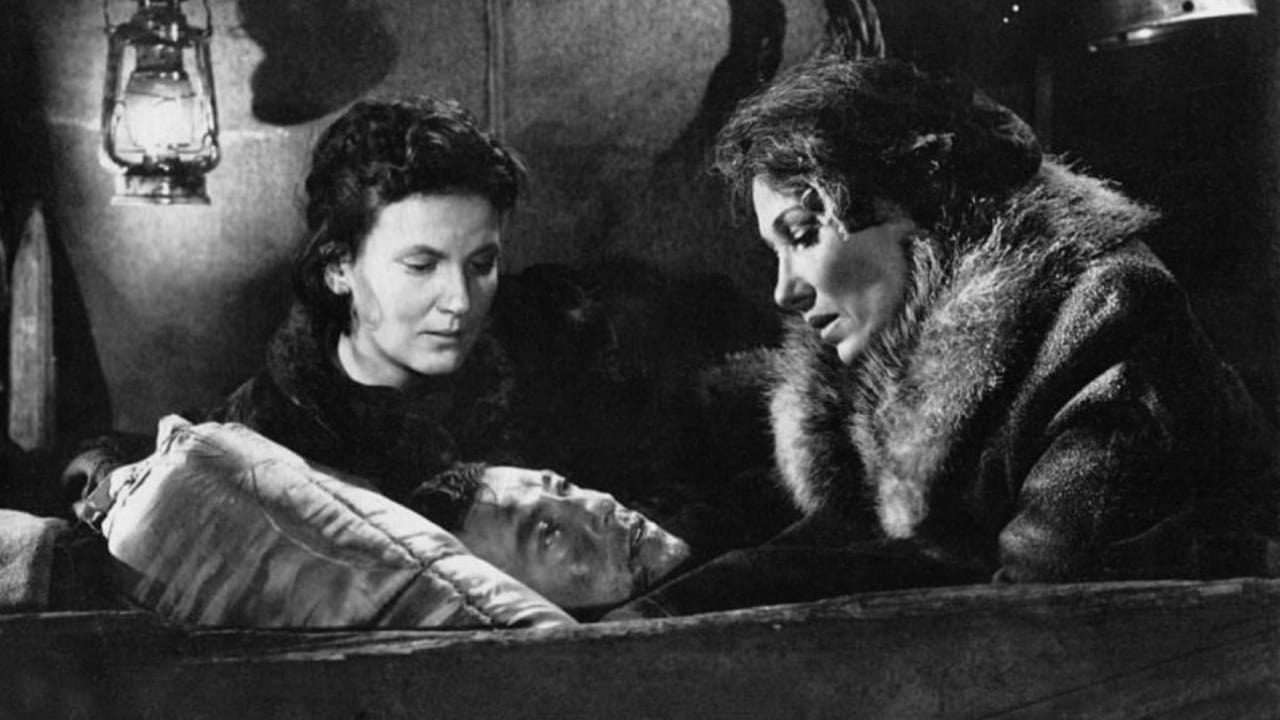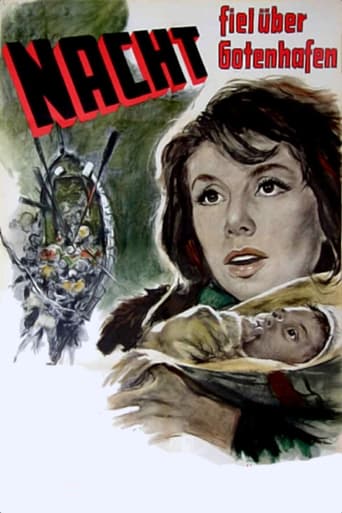

"Nacht fiel über Gotenhafen" or "Darkness Fell on Gotenhafen" is a West German German-language film from 1960, so this one is already over 55 years old. It was written and directed by Frank Wisbar, one of the most impactful German filmmakers between 1955 and 1960, so this one here is possibly his last fairly famous work. There were color movies already by 1960, but still it should not come as a surprise to anybody that this is one of the many black-and-white films. But it has sound of course, this addition existed for a long time at that point already. I cannot say I am particularly familiar with any of the actors from this 100-minute film here except Wolfgang Preiss maybe. And he appeared in many films that attempted to come to terms with what happened during World War II in Germany. Most of the film's action takes place when Germany had already lost the war and the Russians were coming. Germany and its citizens were in no man's land at this point already. Some kept fighting, some kept believing, some surrendered and very many just tried to live. This was what everything was about. And this is also one of the core plot elements of this film we have here. Another would be the sinking of the Gustloff which is the central element of the last third of this film, an important historic event. Unfortunately, I myself am not too interested in films that are too much about the military and this is also the case here. Apart from that, the film has one major problem: namely the fact that it is just way too much for 1 hour and 40 minutes: too many characters, too much happens, too many plot changes etc. Wisbar should have given the movie a lot more focus and just less action in general. The character elaborations also suffered from that and the result was that it was hard to care for anybody in here really despite all the gruesome things happening. These are the reasons why I did not enjoy the watch too much. And why I give this film a thumbs-down. Not recommended.
... View MoreMost people believe that German cinema during the 50's refused to tackle World War II and instead produced glossy historical romances ('Sissi', 'Ludwig II'), mindless Heimatfilme (the highly enjoyable 'Schwarzwaldmaedel' or 'Der Foerster vom Silbersee') or shrill, often exploitative melodramas (best of the crop: 'Nachtschwester Ingeborg' with Maria Schell's much more talented sister in the lead). But just watch 'Nacht fiel ueber Gotenhafen' and you understand why. Almost unbearable harrowing at times the film depicts the first month of 1945 when the Russian Red Army broke into the eastern part of Germany and forced millions of civilians to flee in the coldest of winter. While the Russians invaded Ostpreussen hundred of thousands of civilians were evacuated by ships. Gotenhafen was the last open port and ships left the town almost by the minute, overloaded by refugees. One of the last ships to leave Gotenhafen was the 'Wilhelm Gustloff', a former 'Kraft durch Freude' pleasure cruiser designed for 1000 passengers. Until today it is unknown how many people were on board but it is said to be around 10.000. The ship sunk without a trace and only a handful of people survived this hellish nightmare. Germany's postwar society found it almost impossible to talk about all the suffering of the people (air raids destroyed each and every town and killed over 600.000 inhabitants, over 2.000.000 died during the last month of the war while fleeing from the Russians and countless were deported to Russia).'Nacht fiel ueber Gotenhafen' is a very brave film, tactful and true to the facts. Sonja Ziemann is very good but the highest of praise must be given to Brigitte Horney.
... View MoreThe sinking of the "Wilhelm Gustloff" is the biggest ship catastrophe ever. There were more than 10,000 people aboard - including over 5,000 children; more than 9,000 (!!) died, drowning and freezing to death. It is very odd that this drama is far less known or "popular" as e.g. the "Titanic" desaster, which was a ship of the rich and the super rich.There are several popular books about the "Gustloff", but up to this day moviewise this is the only "monument" in rememberance of those 9,000 people who were buried alive in the Ostsee.
... View More